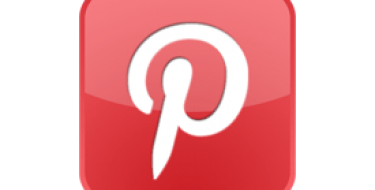8 Things Not to Do on Twitter
Twitter is exciting because it gives businesses yet another opportunity to get their brand and products in front of prospective customers. Like with any new medium, however, there’s a right way to do things, and a wrong way. Here are eight things you should never do on Twitter.
1. Be a Maverick
A “Maverick” is an old-fashioned term for a cattle rancher who doesn’t brand his herd. This causes all sorts of trouble when cattle get loose, because a brand is what identifies them as belonging to a certain owner. The same goes with Twitter: if your company’s Twitter account isn’t branded, how will your prospects know at a glance that it’s your account?
Branding your company account is easy, and only requires a few steps:
- Complete your account profile with your company name, summary, and a link to your website.
- Add a photo to your account (most businesses use a small version of their logo).
- Add a custom background, rather than the default Twitter template.
2. Never tweet
Did you know that an abandoned social media account can hold your business back? When prospects see your neglected Twitter account, they might start to wonder what other ventures you’ve attempted and left by the wayside; you couldn’t follow through with Twitter, so how can prospects expect you to accomplish a major project for them?
Some businesses register a company account on Twitter just to keep competitors, or anyone who isn’t that company, from taking that name. Your efforts at protecting your brand are commendable, but why not take the opportunity to develop that brand? You’ve claimed your company name, so develop a strategy and posting schedule that is optimum for you and start using that account to promote your content and foster conversations online.
3. Tweet personal/proprietary information
This is a big issue for medical companies and services which must comply with HIPAA regulations, but it’s something that all businesses should keep in mind. If your tweets reveal proprietary information about a project or client, you’re putting both that client and your company at risk.
4. Only Re-tweet
A “Re-tweet” simply means that you copy and paste another person’s tweet into your tweets, so that it goes out to all your followers. It’s a great feature, but it can easily become a crutch. If all you do is Re-tweet others’ thoughts and never contribute any original content of your own, you’re missing the point of Twitter.
5. Talk only about yourself
Twitter is a great marketing platform, but it shouldn’t be your personal boasting mechanism. It’s not about you — it’s about how you can help people solve their problems. It’s a fine line, but an important one. Take the time to join industry conversations, give out free advice, and share links to others’ content.
This category also includes personal chatter. Even if you’re a one-person company whose public persona is familiar and personable, no one needs to hear daily that you have a caffeine headache, that your pet is ill, or that you keep forgetting to clean out your refrigerator. A few personal details now and then are fine, but keep those details pertinent and to a minimum.
6. Use offensive/abusive language
The Internet can sometimes give you a feeling of anonymity, but it’s important to remember that Twitter (or any social media platform) is not the place for offensive or abusive language — especially if you’re tweeting for or as your company.
On Twitter, as in life, if you can’t think of something nice to say, don’t say anything at all. Remember that Kenneth Cole tweet heard ‘round the world? Don’t let that be you. If you wouldn’t say it in front of a potential client in a meeting, don’t say it on Twitter.
7. Not track your links
So you’re sharing links to your content — awesome. Now how many people clicked your links? How many Re-tweeted your link, or shared your content on Facebook?
If you’re not tracking how much interest your content is generating, it’s difficult to make any strategic changes that result in more interaction.
If you use a link-shortening service like bit.ly to generate a link to a piece of content, bit.ly will track the interaction that link received, including clicks, Re-tweets, and shares on social media sites. You can see what time of day your content receives the most clicks, or from which country those clicks originate. All this information can give you a better idea of which aspects of your strategy are working and which aren’t, allowing you to adapt.
8. Use Twitter like Facebook
Facebook is like your teenage child: you need to check in on it, and make sure you interact once a day, or every other day. Twitter, meanwhile, is like your toddler: it moves quickly and requires lots of attention and interaction. Keep your followers interested by asking questions, sharing content, and joining in on conversations.
This point also applies to all social media platforms. Don’t treat Facebook like Twitter. Or LinkedIn like Facebook. Different social media sites require different strategies: what works well on one platform might not work so well on another.
If you’re interested in learning more about what we do, we’d love if you would follow Digett on Twitter. And if you need some help with your social media strategy, feel free to drop us a line.
Image: s_jelan
MONTHLY MARKETING INSIGHTS.
Get thought-provoking and actionable insights to improve how your firm makes a connection with your customers.





LEAVE A COMMENT